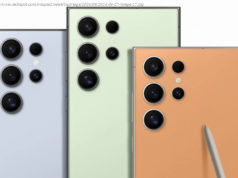Google knows where the problem lies and expects a fix in « very soon, » the company told CNET.
Editor’s note: This is an ongoing review that was originally published on Oct. 11. The latest update was published on Oct. 14.
We found problems with the Google Pixel 8 Pro in our early testing. The most notable issues were with the camera, which exhibited odd artifacts, especially in high-contrast situations. We’ve now spent over a week testing multiple models of the phone across the globe. We’ve taken hundreds of images and been able to gain a deeper understanding of the issues we’ve seen.
CNET reporter Stephen Shankland unpacked many of the Pixel 8 Pro’s issues and elaborated on what might be causing them. It’s largely a software problem, and Google knows where the problem lies and expects a fix « very soon, » the company told CNET on Thursday.
While we’re still seeing the same image-processing problems after more testing, we’ve also amassed numerous examples where the Pixel 8 Pro performed extremely well. We tested it in daylight, at night, and how it compares to rivals including the iPhone 15 Pro and the older Pixel 7 Pro.
Right now, we’re confident that the camera issues are relatively minor and that many of you who’ve already bought the phone may not even notice. But a $999 (£999, AU$1,699) phone should not have problems like these, so we’re postponing our final verdict until we see the difference the upcoming software update makes.
Below, you’ll find an ongoing review of the phone with my opinions on the design, display, processor and battery, informed by multiple editors’ testing. I’ll continue updating this review over the coming days as I retest the phone, especially the camera. We haven’t found any of these issues testing the regular Pixel 8 and, in fact, really like it.
What does this mean for you? If you’re looking to buy the Pixel 8 Pro, we advise you to wait. Keep your eye on this review as it develops and wait for our final verdict.
The Pixel 8 Pro is Google’s latest flagship phone, and as such packs a host of refinements over its predecessor, including a new processor, cameras and more AI skills. I loved the older Pixel 7 Pro and believed it was one of the best Android phones money could buy. The 8 Pro has a lot to live up to.
Putting aside the camera problems I’ve experienced, the Pixel 8 Pro has plenty going for it, from its solid gaming performance, its decent battery life and its slick Android 14 interface. But the most important change is that Google is committing to seven years of software updates for the phone, a huge boost over its previous offering and much more than most other Android manufacturers. It means this phone should still be going strong in 2030, if it lives up to Google’s claims.
The triple rear-camera setup got some updates, including wider apertures on both the main and telephoto lenses and higher resolution for the ultrawide lens.
The Pixel 8 Pro’s camera bar.
But it’s the camera that’s been most problematic for us in our testing so far and needs to be resolved before we could recommend it. Several of our test images with high-contrast scenes show bizarre-looking image noise and artifacts in the shadowy areas, along with extremely aggressive software smoothing on areas that should maintain detail. I found similar issues in night mode photos, too.
Shankland’s Pixel 8 Pro camera analysis dives more deeply into the cause of some of these problems. It essentially boils down to how the software tries to blend multiple image exposures together and doesn’t do a particularly neat job at it. However, software problems can be remedied and Google has said that an update is coming soon that should address the worst of our concerns.
In scenes with high contrast, the Pixel 8 Pro can obliterate details and produce unnatural noise speckles in shadow regions. At left is the unedited JPEG, viewed at 100% zoom, and at right is the raw photo with exposure boosted to show the problem more clearly. This is from a larger photo with much brighter elements not visible here; the problem doesn’t occur with more even lighting. A fix is in the works.
The phone’s DNG raw files tend to come out worse, with increased image noise and a weird muddiness to the scene that needs heavy corrections. It’s likely, though, that this is exacerbated by poor compatibility with raw editing apps like Lightroom and may be rectified as Adobe support rolls out.
Taken with the main camera in a generally well-lit room, this image suffers from some seriously weird artifacts.
Zooming in makes it obvious to see the issues, with both overzealous detail smoothing and weird noise problems becoming apparent.
This high-contrast scene from the main camera doesn’t look too bad at first.
But whatever’s going on over here is just… weird.
There’s a 1- to 2- second delay I encountered when taking 50-megapixel raw images, which likely won’t be going away. Google explained that this delay is simply due to the phone having to take multiple, massive files and piece them together.






